
Pork and Shrimp Gyoza
Perfectly steamed Pork and Shrimp Gyoza with a golden crispy base have to be one of the most delicious dumplings around. Serve with a simple spicy dipping sauce. Yum!
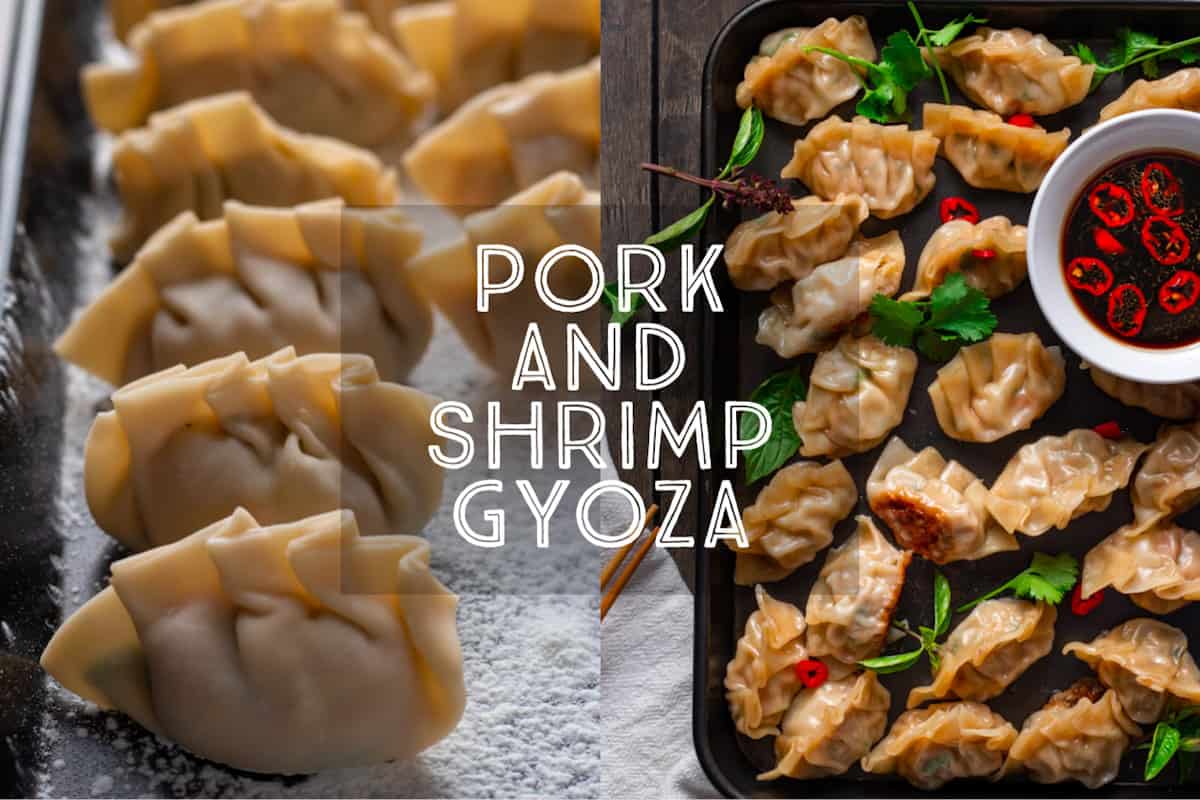
Perfect little parcels, my Pork and Shrimp Gyoza or potstickers are full of flavour. These tasty little morsels are much easier to make at home than you might think and WAY cheaper than getting takeout.
OK, I’ll admit it, I am still a sucker for a good dumpling restaurant. Trolleys laden with steaming baskets of tasty treats are sure to bring a smile to my face, but I also LOVE making dumplings at home.
TABLE OF CONTENTS
▼
What are Gyoza?
Gyōza are Japanese pan-fried dumplings that evolved from the Chinese Jiaozi. They are small dumplings filled with pork, cabbage, garlic and ginger folded into a crescent shape.
Both these types of dumplings are cooked by first frying, then steaming, giving them a golden brown crust on the bottom and their common English name, ‘potstickers’. The combination of steamed tops and crispy bottoms makes them unique in the dumpling world.
Gyoza are usually served with a spicy soy dipping sauce with sesame oil. To describe them in one word? Delicious!
Ingredients
To make my Pork and Shrimp Gyoza recipe, you’ll need the following main ingredients:
- Ground Pork: Ground pork or pork mince forms the basis of the Gyoza filling. You can replace it with other ground meat, such as chicken or turkey.
- Shrimp: A little goes a long way. Adding just a handful of diced shrimp or prawns gives these dumplings a fantastic flavour boost. Don’t like seafood? Leave them out.
- Cabbage: I always use Chinese cabbage (sometimes known as Napa cabbage or wombok) when I make gyoza. The delicate leaves are much easier to shred than standard cabbage.
- Water chestnuts: Water chestnuts add crunch and body to the filling.
- Herbs: I use Thai basil and coriander (cilantro) to flavour my gyoza. Garlic chives are delicious if you can get them.
- Garlic and ginger: For flavour and a bit of spice.
- Soy sauce: Soy sauce adds a savoury umami hit to the dumplings. It’s also used with rice wine vinegar to make the delicious gyoza dipping sauce.
- Gow Gee or wonton wrappers: Often found in the freezer aisle of a well-stocked grocery store, these wrappers are the skin of the dumpling. Look for a local Asian grocer for the best quality. You can get them from Woolworths or Coles in Australia.
The complete ingredient list and detailed instructions are in the recipe card at the bottom of the page.
How to make Japanese Gyoza
Making homemade gyoza is simple with a little bit of practice. There are 4 main steps to the recipe.
Then all that’s left to do is enjoy your Gyoza with spicy dipping sauce!
Gyoza Dipping Sauce Recipe
The most straightforward bit of the whole meal! To make a simple Gyoza dipping sauce:
- Combine 4 tablespoons of soy sauce with 4 tablespoons of rice vinegar*.
- Stir together with 1 Tablespoon of sesame oil and 1.5 teaspoons of sugar.
- Add slices of a small hot chilli and allow to infuse.
*note: Australians! You use a bigger tablespoon than the rest of the world (yes, really!) You only need 3 tablespoons of soy and vinegar in this recipe.
How to freeze Gyoza
Making Gyoza is fun, but it can take a while, especially on your first go. The good news is that they are easy to freeze and cook beautifully from frozen.
To freeze gyoza: Place them in a single layer on a flat baking sheet or plate that has been liberally dusted with cornstarch (cornflour). Freeze until completely solid, then transfer to a sealable freezer bag.
To cook frozen dumplings: Proceed as per the recipe, adding a couple of minutes to the cooking time to allow the gyoza to cook through.
FREQUENTLY ASKED QUESTIONS
Can I prepare gyoza in advance?
Yes, though as the wrappers dry out quickly, if I prepare these dumplings in advance, I freeze them directly.
I don’t like seafood. Can I make gyoza without?
Of course! Just leave it out of the recipe.
Are gyoza gluten-free?
Not usually. Both soy sauce and dumpling wrappers contain wheat. However, there are gluten-free alternatives available in specialist stores.
Looking for more dumpling recipes? Try my delicious Pork Dim Sum or Chicken Wonton Soup!
Pork Gyoza Recipe Card
Pork and Shrimp Gyoza (Pot Stickers)
Perfect little parcels, my Pork and Shrimp Gyoza (potstickers) are full of flavour. These tasty little morsels are much easier to make at home than you might think and WAY cheaper than getting takeout.
Ingredients
for the gyoza dipping sauce:
- 60 ml light soy sauce
- 60 ml rice vinegar
- 1 Tbsp sesame oil
- 1 ½ tsp sugar
- 1 hot red chilli, finely sliced
for the filling:
- 300 g ground pork
- 6 large cooked shrimp / prawns, peeled and deveined
- 4 Chinese cabbage, wombok leaves, very finely shredded
- 225 g can of water chestnuts, drained and finely diced
- 2 spring onion / green onions, finely sliced
- 2 cloves garlic, crushed
- 2.5 cm piece of fresh ginger, finely grated
- 1 egg, lightly beaten
- 1 Tbsp cornstarch / cornflour
- 1 Tbsp light soy sauce
- ½ tsp sea salt
- 1 bunch cilantro / coriander, finely chopped
- 1 bunch Thai basil, leaves finely chopped (optional)
to cook:
- 40 Gow Gee or wonton wrappers, defrosted
- 2 Tbsp vegetable oil
Instructions
- MAKE THE GYOZA DIPPING SAUCE: Stir together all dipping sauce ingredients in a small bowl and set aside to infuse.
- MAKE THE PORK FILLING: In a large bowl, stir together all filling ingredients, then use your hands or a spatula to mix until well combined and slightly sticky.
- FILL GYOZA: Dust a tray or large platter liberally with cornstarch and fill a small bowl of water. Lay eight gyoza wrappers on a work surface and place a heaped teaspoon of filling in the middle of each.
- FOLD GYOZA: Working one at a time, dip your finger in the water and run it around half of the edge of the wrapper, then fold the sides together and press to seal. Holding the gyoza in your hand, dampen the sealed edge and fold small pleats to shape.
- REPEAT: Transfer the completed dumplings to the prepared platter or tray, and repeat with the remaining wrappers and filling. At this point, you can freeze the dumplings or proceed to cooking.
- COOK GYOZA: Heat vegetable oil in a large non-stick skillet or frying pan (it needs a lid!) over medium heat. Place the dumplings close together in the pan and cook without moving for 2-3 minutes or until golden brown and crisp on the underside. Carefully pour in half a cup of water, then cover with the lid – this can splash a little, but move quickly, and you’ll be fine.
- STEAM GYOZA: Allow the dumplings to steam for 4-5 minutes or until the water has evaporated. Next, remove the lid, cook a minute longer, and then detach them from the pan using a spatula.
- SERVE: Transfer to a serving plate and serve immediately with the spicy dipping sauce and any extra coriander you have left over.
Notes
- Folding gyoza takes a little practice! You can also try holding the wrapper in your left hand while making the pleats with your right if you find it more manageable.
- If you’re cooking from frozen, allow an extra minute or two of steaming time to ensure they are cooked through.
- 4Keep the open packet of wrappers covered with a damp cloth or plastic wrap to prevent them from drying out. Store leftover wrappers in a sealed bag in the freezer.
As an Amazon Associate and member of other affiliate programs, I earn from qualifying purchases.
Nutrition
Serving: 10Gyoza | Calories: 681kcal | Carbohydrates: 73g | Protein: 34g | Fat: 30g | Saturated Fat: 8g | Polyunsaturated Fat: 8g | Monounsaturated Fat: 11g | Trans Fat: 0.1g | Cholesterol: 126mg | Sodium: 1946mg | Potassium: 999mg | Fiber: 4g | Sugar: 4g | Vitamin A: 1713IU | Vitamin C: 22mg | Calcium: 243mg | Iron: 9mg
Tried this recipe?I’d love to hear how it went! Please leave a review or a star rating and let me know how it was! Use the hashtag #daysofjay on Instagram so I can see your delicious creations.

About the Author
Jay Wadams is a cookbook author, food photographer, and graduate of Le Cordon Bleu in Gastronomy and Nutrition.
Based in Italy 🇮🇹 Germany 🇩🇪 and Australia 🇦🇺.


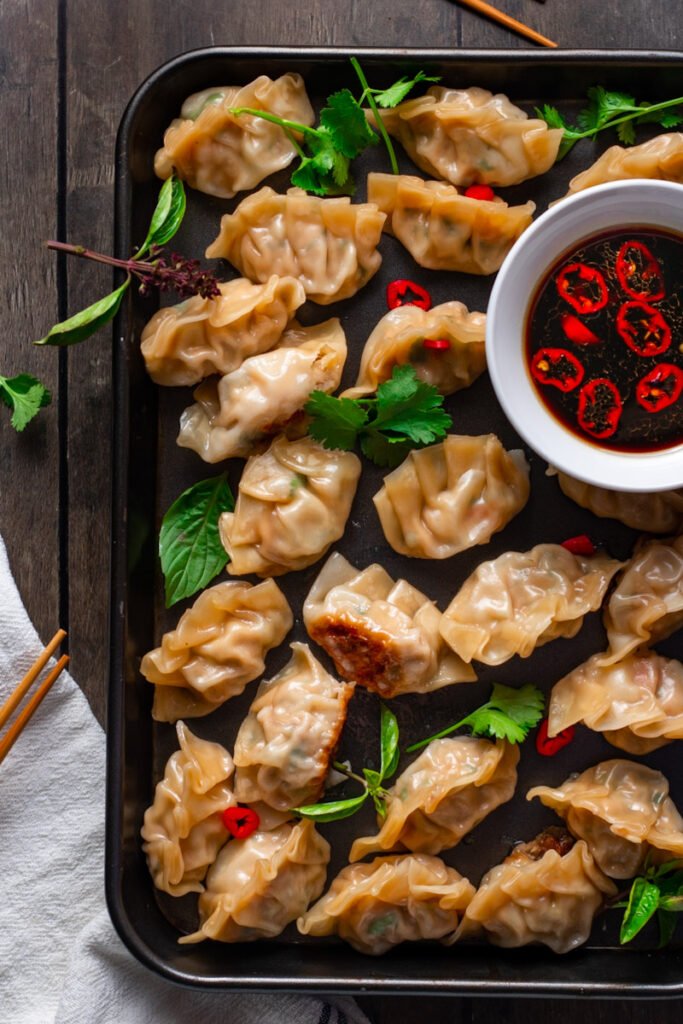
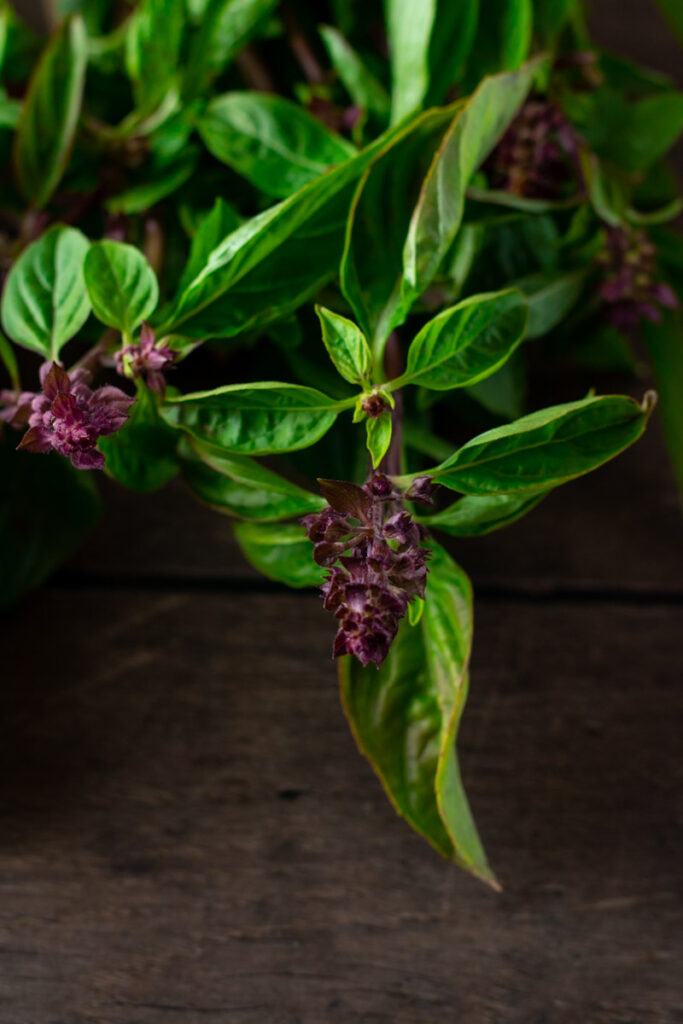
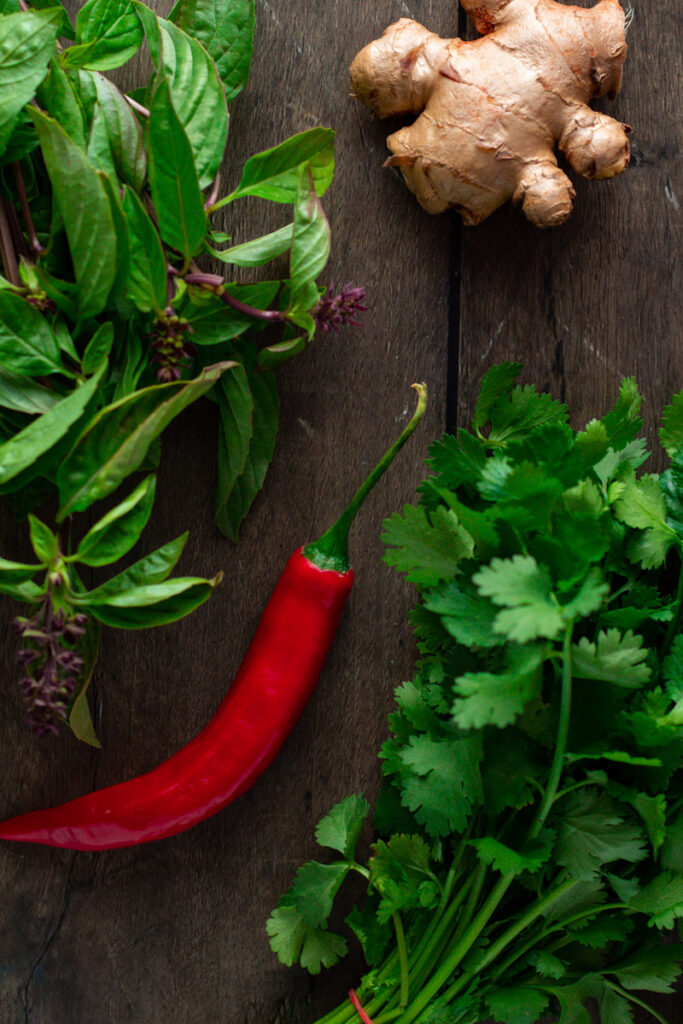
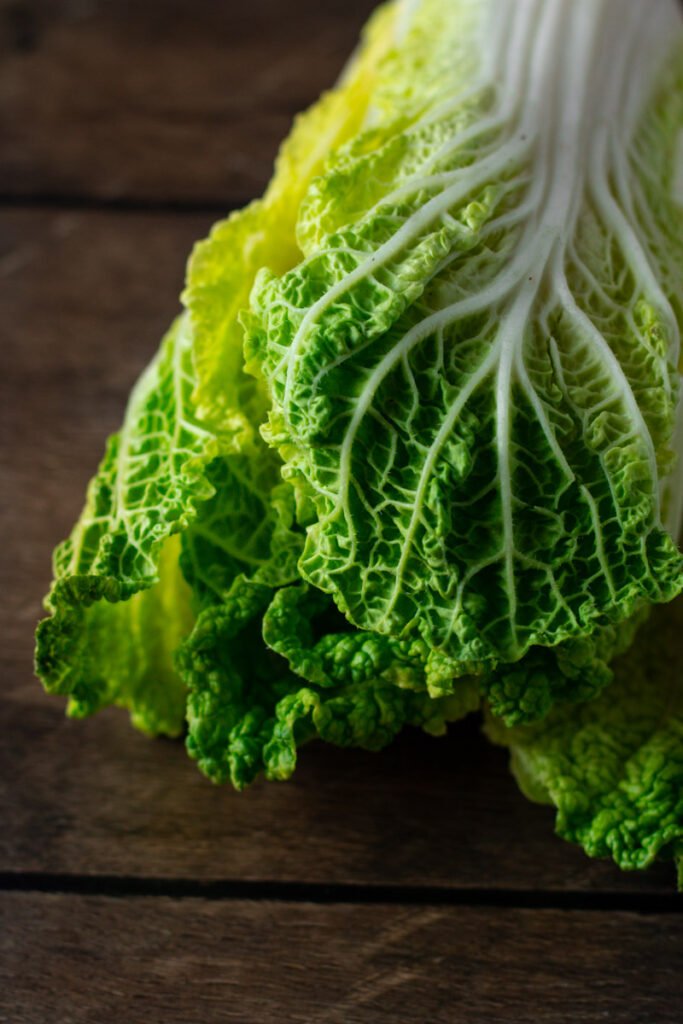
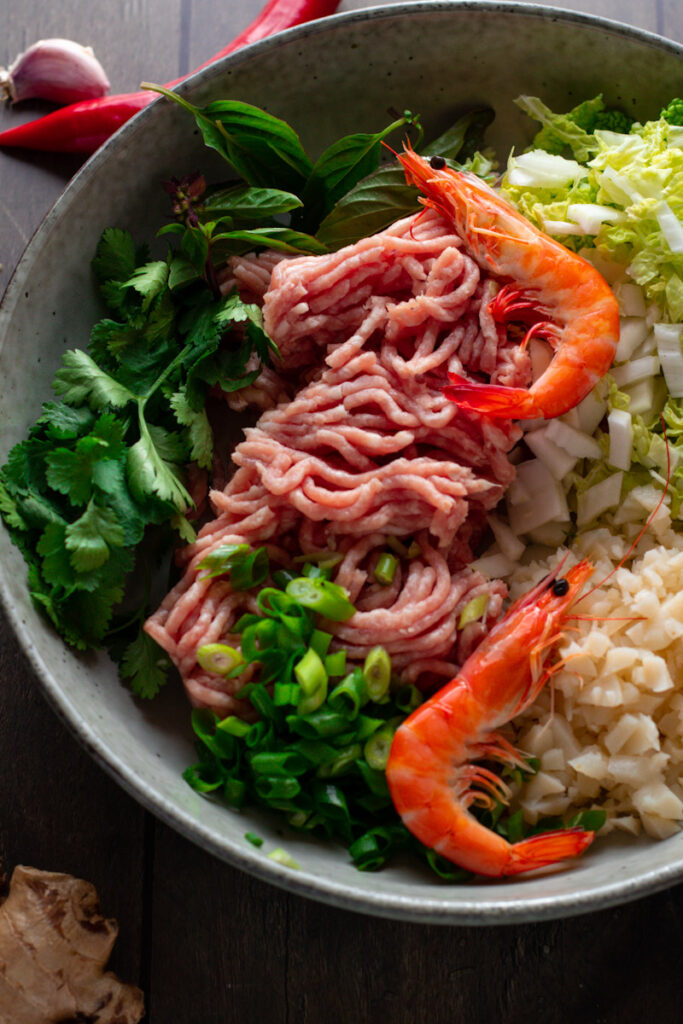
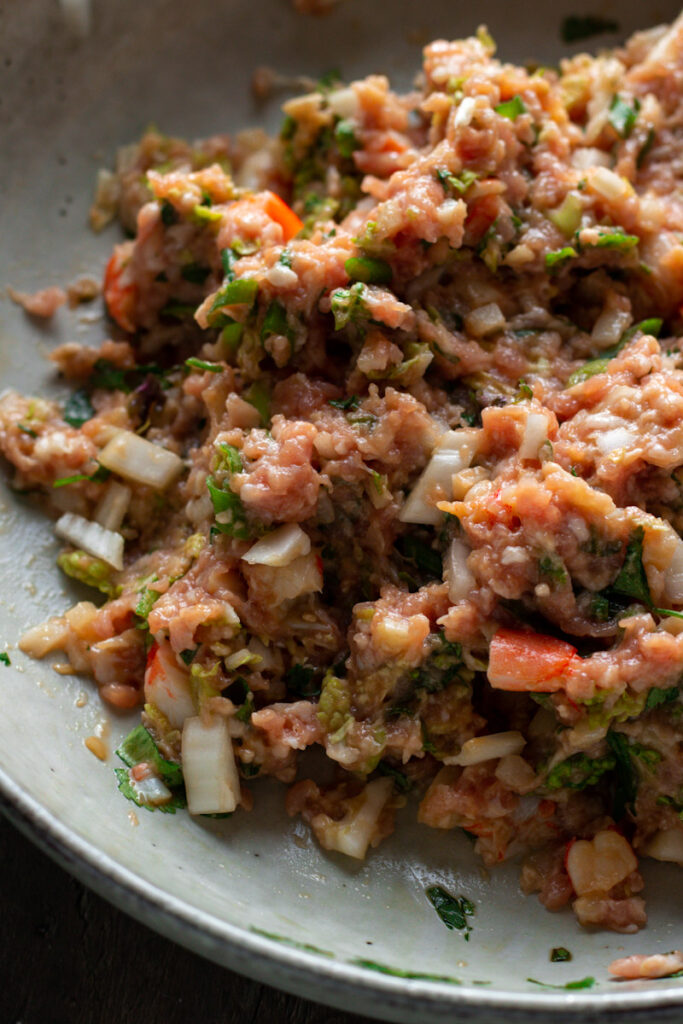
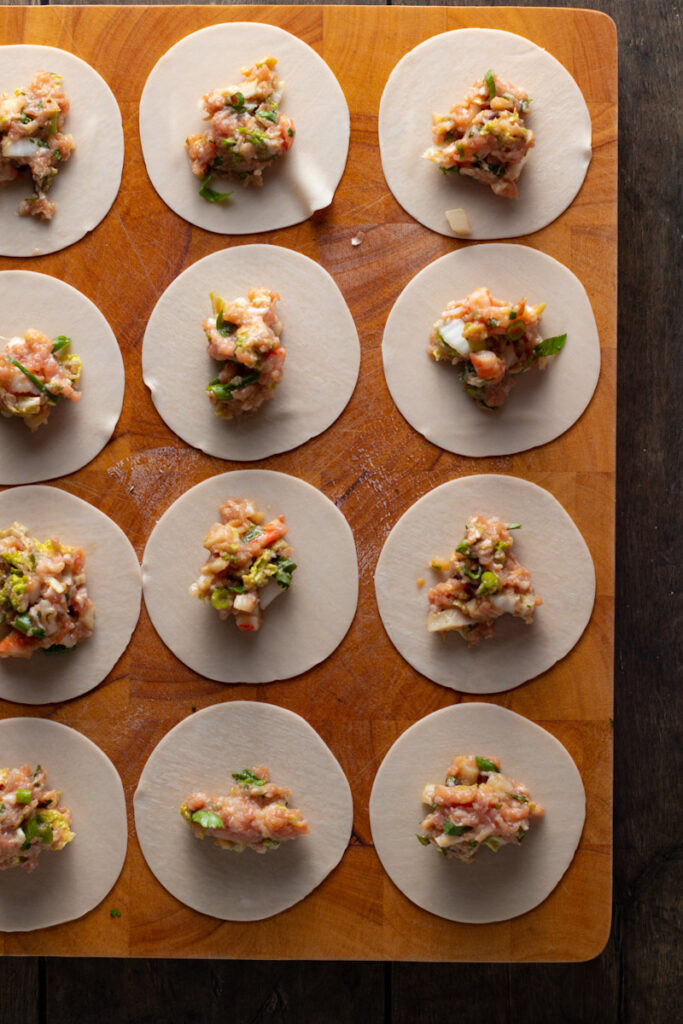

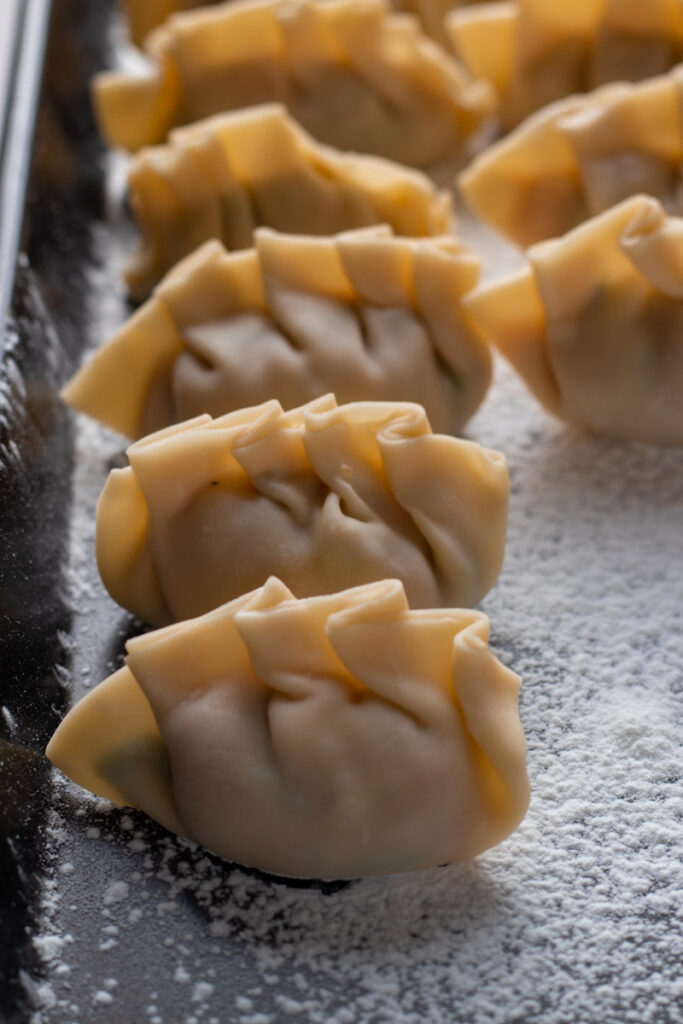
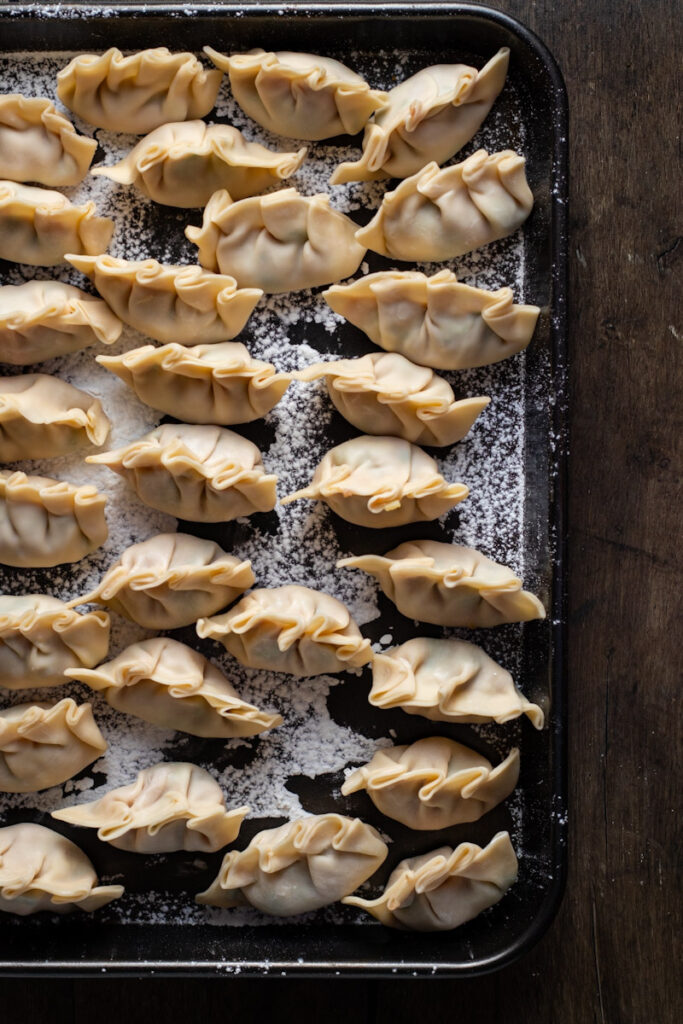
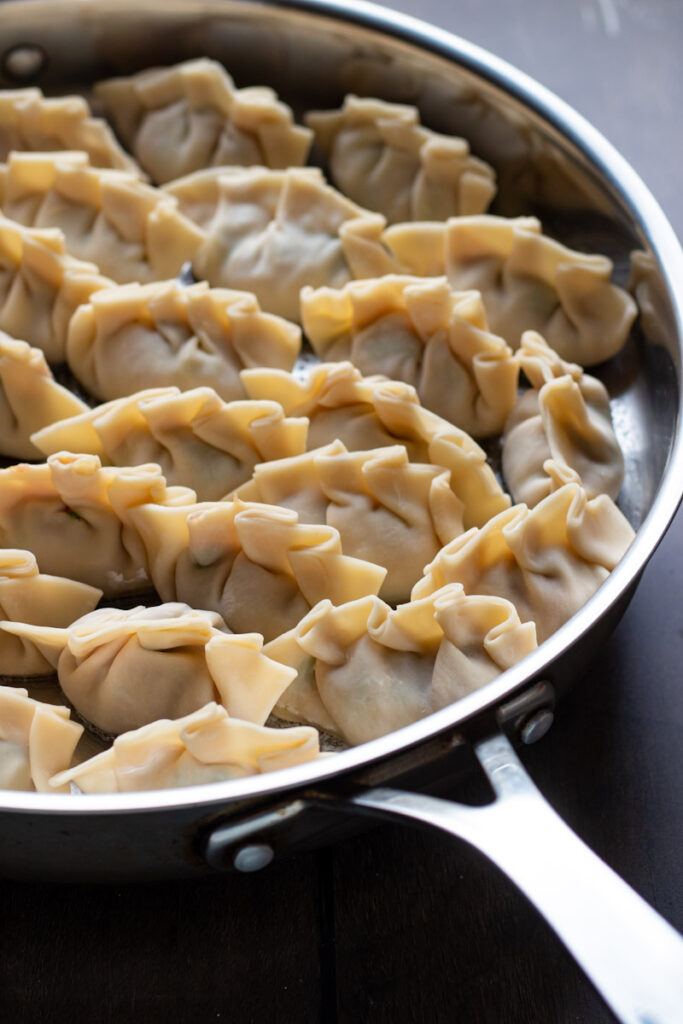
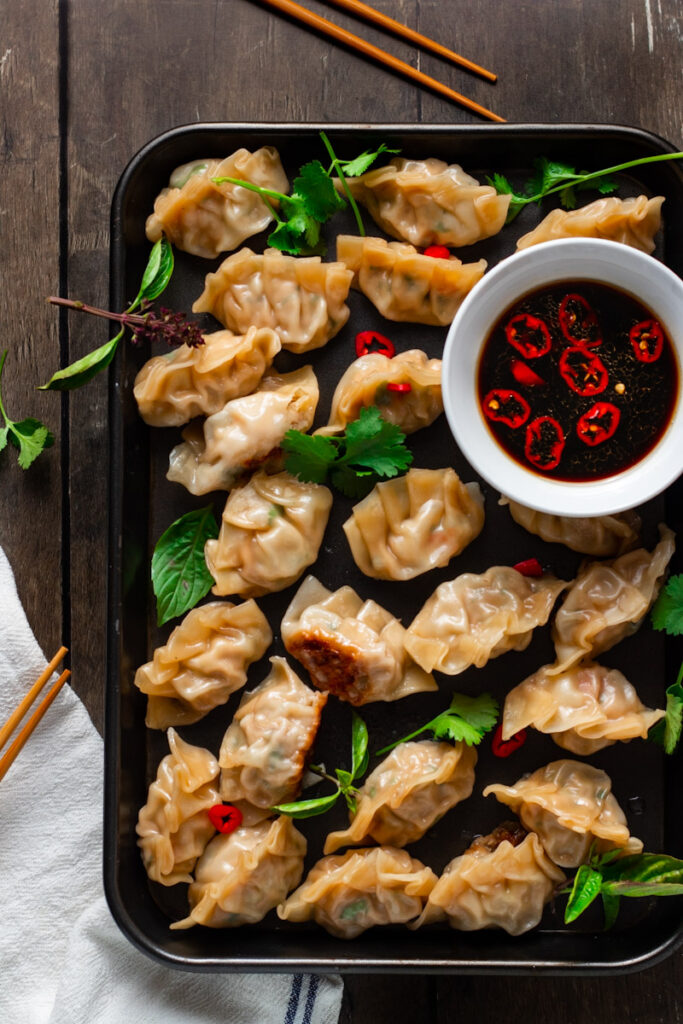

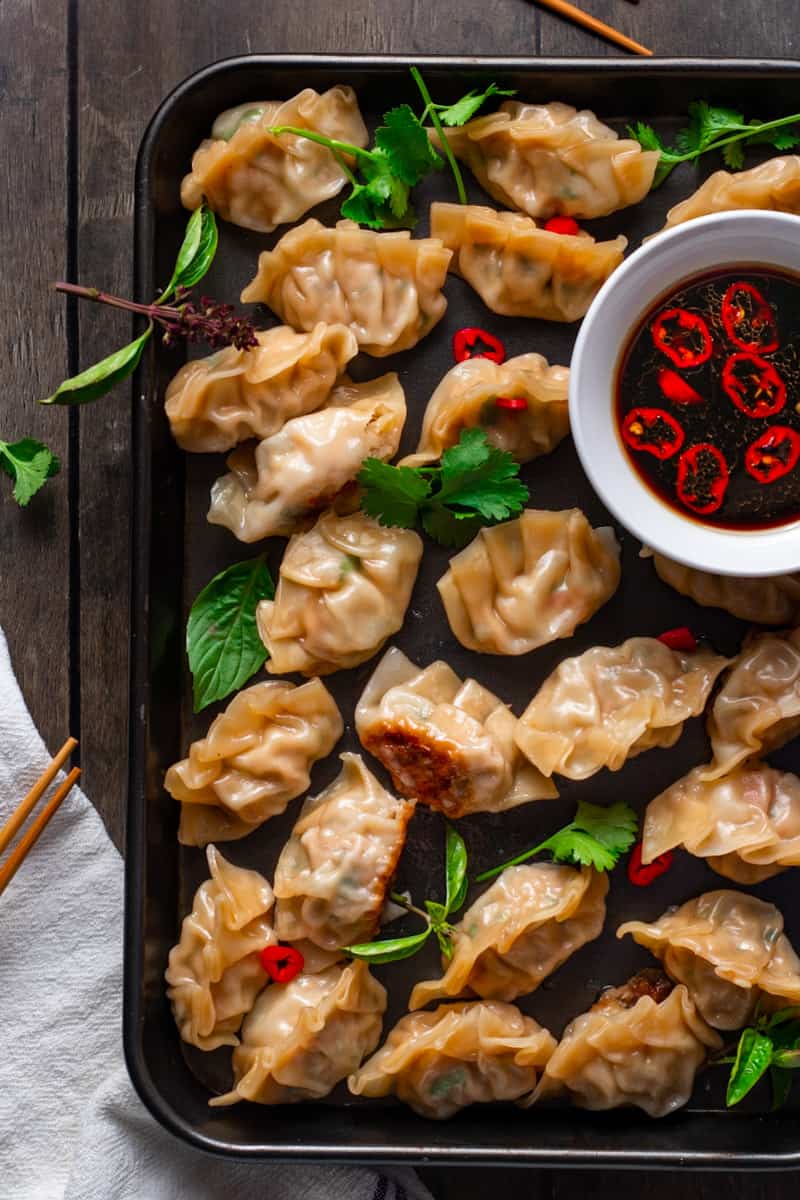
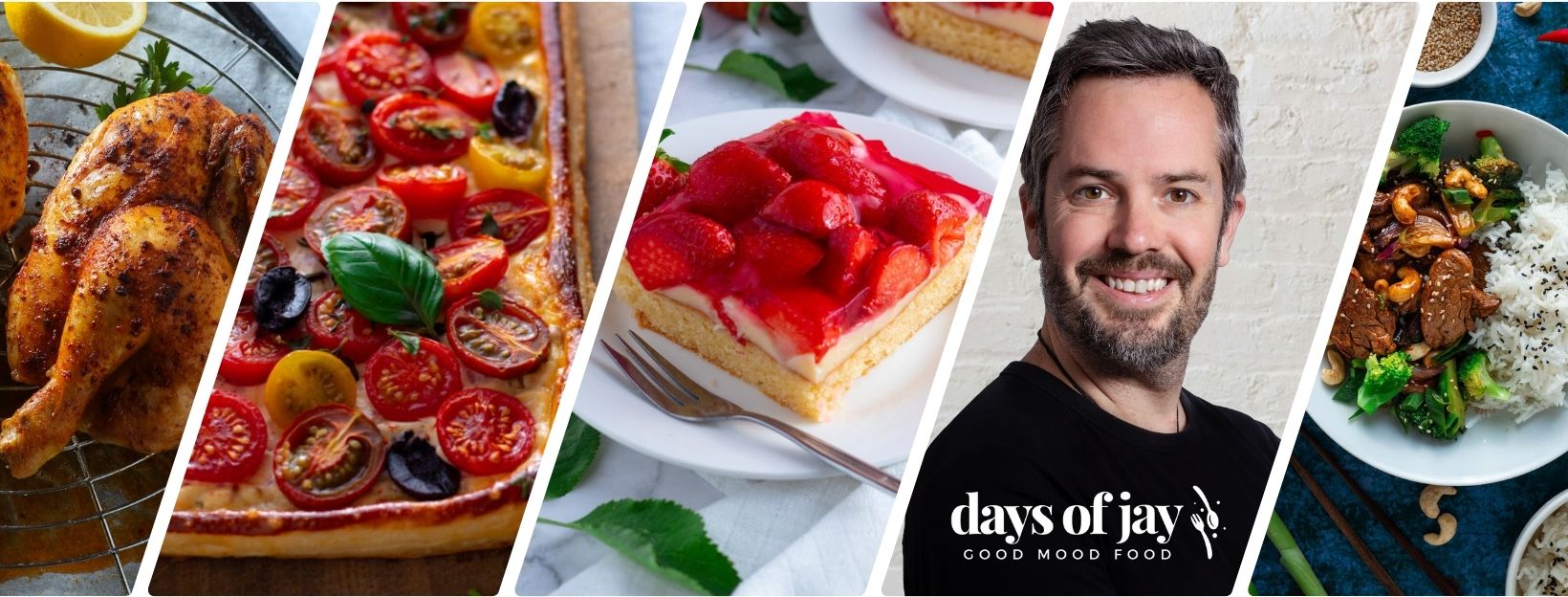

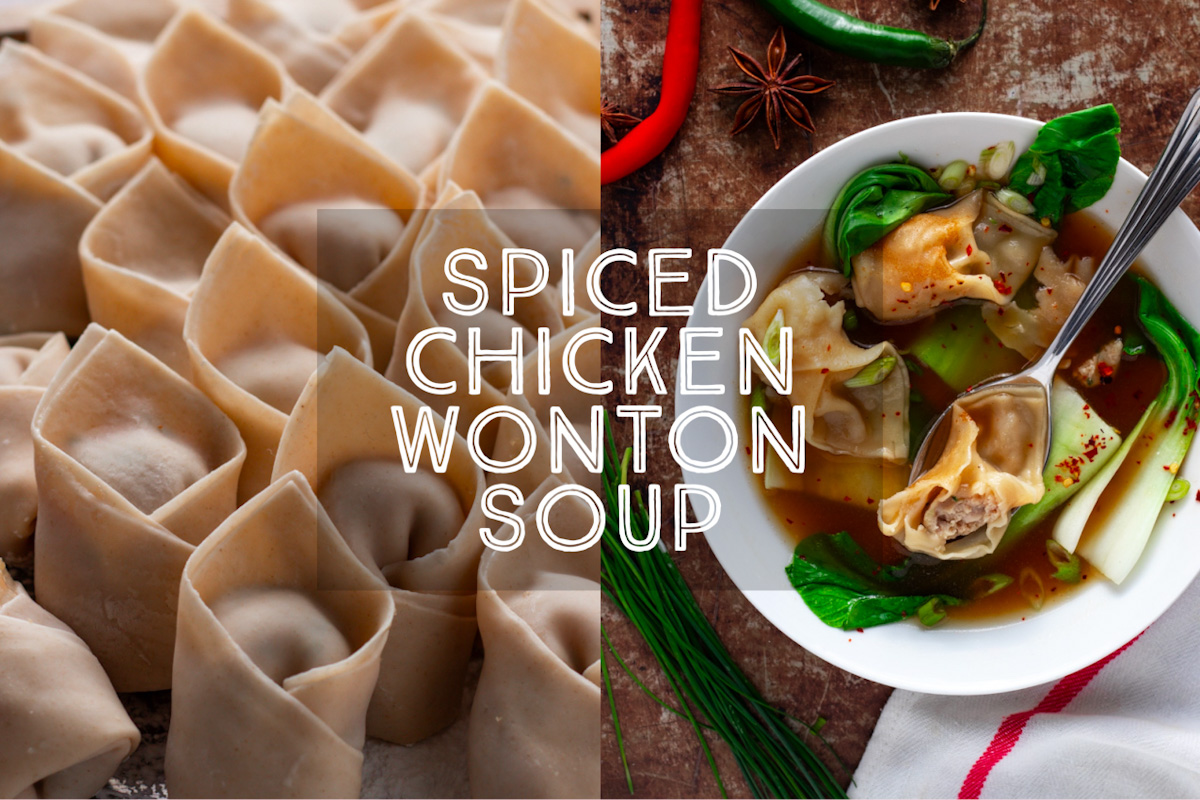
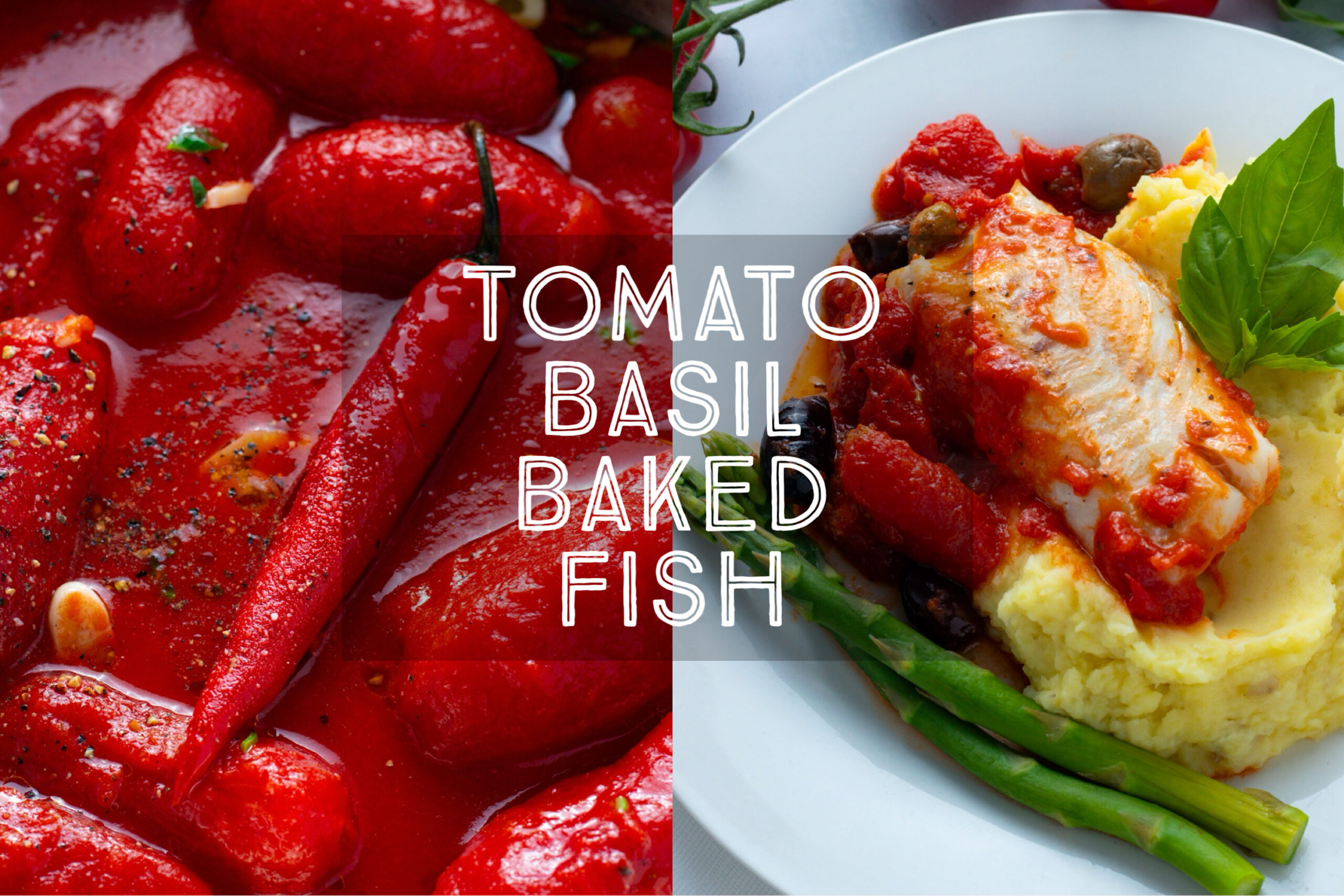
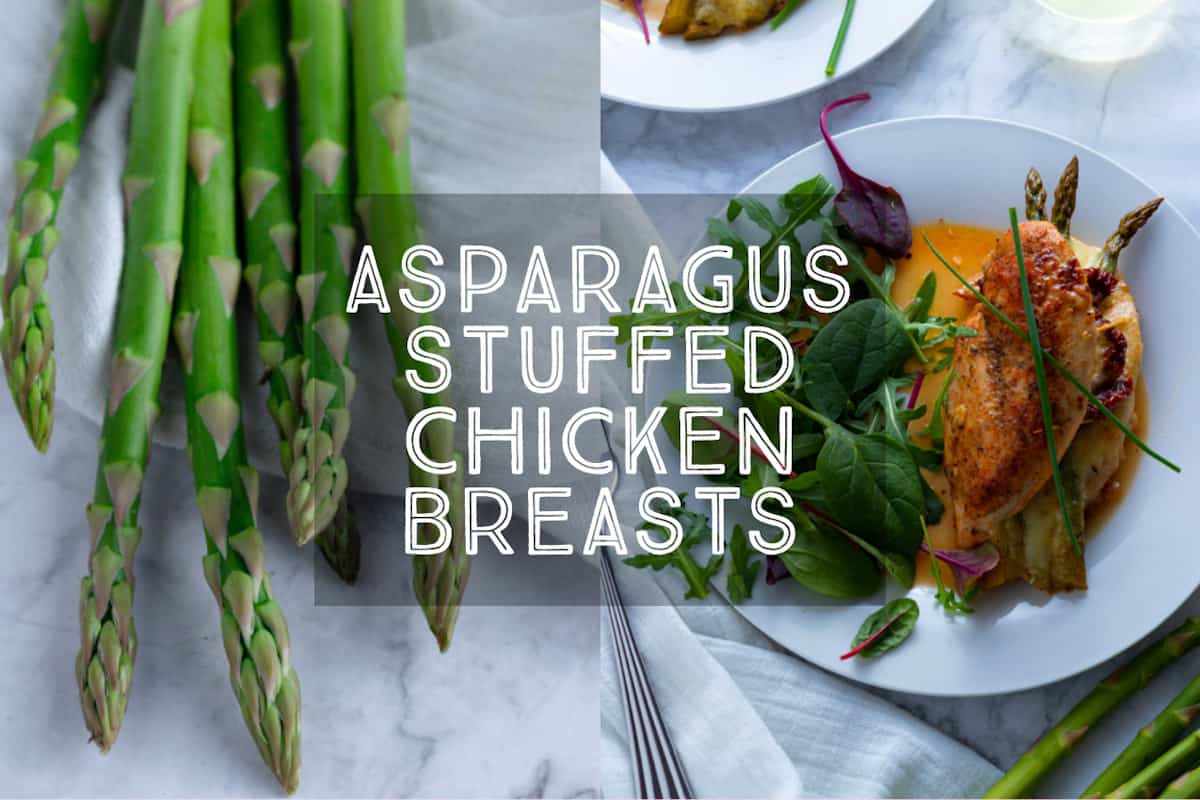
I have been making Gyoza for close to 40 years for my family and friends. I have a comment on your receipt. From my experience Gyoza wraps come either thick or thin. We always use the thinner ones. The thicker ones are often called Potstickers. We always deep fry our Gyoza as it gives a Crispy shell.
Your filling is similar to how we do it. We also make the filling task a family affaire as we make somewhere between 80 to 100 at a time. Great left overs the next day.
Hi Tom! Thank you so much for taking the time to leave a comment. You’re quite right about the gyoza wrappers of course, I’ll update the recipe with this important info! I love the idea of cooking together with the family, creating and then eating a meal together with loved ones is one of the great joys of cooking. J.